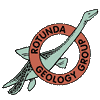Summer Field Programme - 8 June 2019
Reighton Gap, Filey Bay. Lower Cretaceous Speeton Clay and Chalk
Pete Rawson
Leader: Pete Rawson
Purpose: This excursion is in two parts. The first will focus on the type locality of the Lower Cretaceous Speeton Clay while the second part will examine the overlying chalks, exposed along the south-eastern part of Filey Bay.
Access: The trip is suitable for participants with reasonably good mobility. The total walking distance is about 1.75 miles for the Speeton Clay sections and 3 miles for the Chalk cliffs. It is mainly along the shore, with a gentle cliff path at the beginning and end of the excursion.
Logistics: Meet at 11:30 am at a small parking area (nearest postcode YO14 9SE; Grid Ref: TA 128757) on the cliff-top at Reighton Gap; parking is also available at the side of the road nearby. If you arrive late, follow the signposted path down to the shore then round a small point to walk SE along the sands (i.e. towards the chalk cliffs) until you spot the party.
Health and Safety: Hard hats are essential if you wish to follow the second part of the excursion, to the Chalk cliffs. The chief hazards are those normally associated with excursions along the scar beneath cliffs.
- Terrain: The clay cliffs can be very slippery when wet. Hard hats are useful but not essential unless you wish to continue to examine the chalk cliffs. The walk to the Speeton Clay is on sand and shingle: continuing towards the chalk cliffs it may be necessary to walk over small chalk boulders.
- Tides: Low tide 14:55 pm; High tide 08:35.
- Weather: Consult the weather forecast and bring appropriate clothing. Stout, preferably waterproof footwear (but not wellington boots) and waterproof clothing are necessary.
Geology: The Speeton Clay sequence represents almost the whole of Early Cretaceous time and provides a fascinating glimpse of life in a marginal marine basin of the Boreal Realm. The clays crop out in low cliffs which are prone to landslipping and marine erosion, so the degree of exposure changes constantly. In 1889 G. W. Lamplugh divided the sequence into four main units, the A (top) to D (bottom) beds, based on the belemnite faunas. This provided the key to unravelling the details of the section.
The excursion will concentrate on the stratigraphy and fossil fauna. Whatever the degree of exposure on our visit, we can guarantee that you will find some of the typical belemnites!
The chalk cliffs expose the Hunstanton Chalk Formation (‘Red Chalk’) and the lowest beds of the Chalk Group.
We will also see a wide range of erratic rocks, including some with Carboniferous corals, washed onto the beach from the adjacent glacial tills, which form the cliffs around Reighton Gap.
Lunch: Bring a packed lunch to eat on the beach.
